When most people think of Egypt, images of the Great Pyramids and ancient temples immediately come to mind. But beyond these iconic wonders lies a different Egypt—one of breathtaking natural landscapes, rich biodiversity, and emerging sustainable tourism initiatives. My journey through Egypt wasn’t just about witnessing history; it was about experiencing the country’s commitment to preserving its natural treasures through ecotourism.
As I planned my trip, I was determined to explore Egypt differently—to venture beyond the typical tourist path and discover how this ancient land is embracing modern conservation. What followed was a three-week adventure that changed my perspective on travel and sustainability in ways I never expected.
The breathtaking landscapes of Egypt offer more than just ancient monuments—they’re home to thriving ecosystems and sustainable tourism initiatives
The Magic of Siwa Oasis: A Desert Sanctuary
My eco-adventure began in Siwa Oasis, a remote paradise nestled in Egypt’s Western Desert. After a long journey from Cairo, the first glimpse of this lush haven amid endless sand dunes took my breath away. Exploring the untouched beauty of Siwa was one of the most rewarding eco experiences of my trip. This oasis is a perfect example of Egypt’s hidden Eco Destinations.
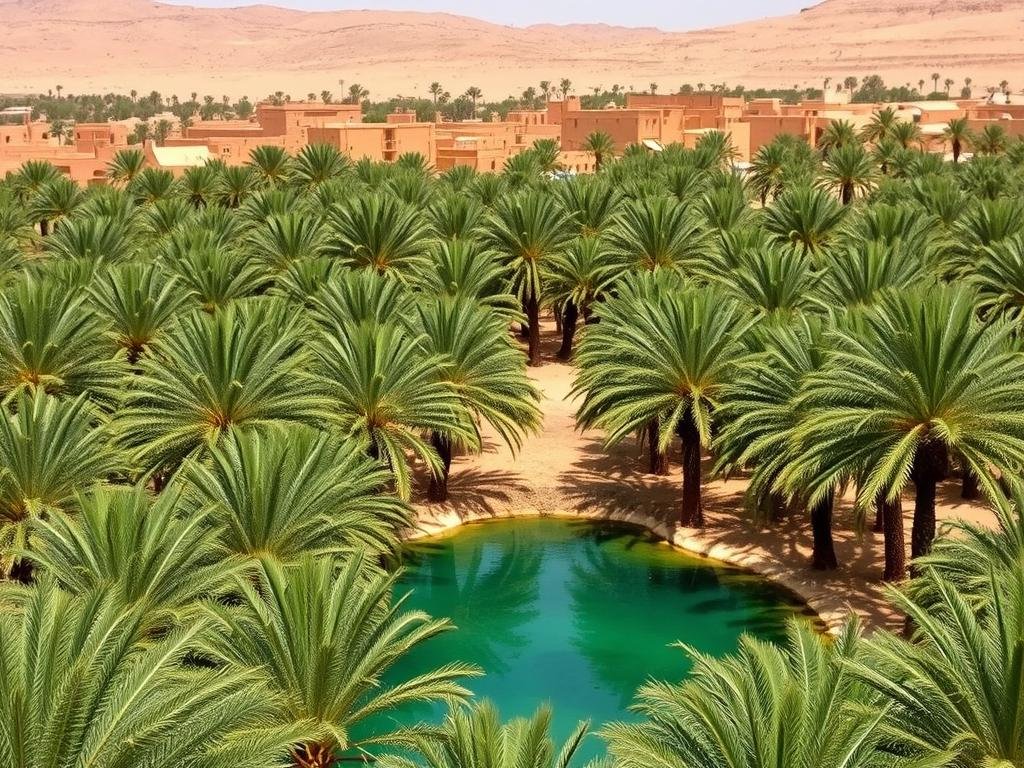
Siwa Oasis stands as an ecological wonder where ancient traditions and sustainable practices coexist harmoniously
I stayed at Shali Lodge, an eco-friendly accommodation built entirely from kershef—a mixture of salt rock and mud that naturally regulates temperature. The lodge operates on solar power and serves organic meals prepared with locally grown ingredients. My room had no air conditioning, yet remained perfectly cool despite the desert heat—a testament to traditional building techniques that have sustained Siwans for centuries.
Each morning, I woke to birds chirping in the date palms outside my window. My local guide, Mahmoud, took me to explore the salt lakes where I floated effortlessly in water ten times saltier than the ocean. “These lakes are part of our heritage,” he explained. “We harvest salt sustainably, taking only what we need while preserving the ecosystem.”
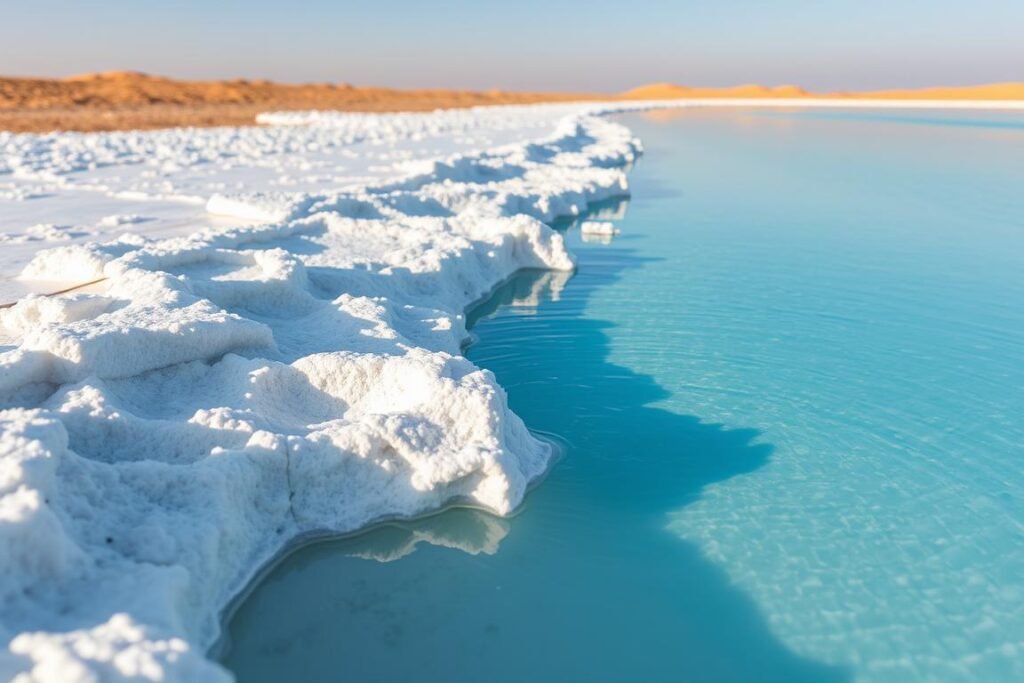
The salt lakes of Siwa offer both natural beauty and sustainable livelihoods for local communities
One evening, we visited a local family who invited us to share a traditional Siwan meal. As we sat on handwoven mats, enjoying dishes made from local olives, dates, and herbs, I learned how ecotourism has helped preserve Siwan culture while providing sustainable income for families. “Before travelers came seeking nature experiences, many young people left for cities,” our host explained. “Now they stay to become guides, artisans, and eco-lodge managers.”
Small Actions, Big Impact: My Sustainable Travel Practices
Throughout my journey, I committed to minimizing my environmental footprint. I quickly learned how small actions—like saying no to plastic bags or buying handmade products—aligned perfectly with these Sustainable Tips. My reusable water bottle became my constant companion, filled with filtered water provided by eco-conscious accommodations.

My eco-travel essentials helped reduce waste while exploring Egypt’s natural wonders
In markets, I sought out artisans creating products from sustainable materials. In Siwa, I purchased a basket woven from palm fronds by a local craftswoman. “When you buy directly from us,” she told me, “you support our families and our traditional crafts.” These interactions taught me that responsible travel isn’t just about reducing environmental impact—it’s about supporting communities that protect natural resources.
Transportation choices matter tremendously in eco-travel. Whenever possible, I opted for shared vehicles or public transport. For shorter distances, I walked or rented bicycles. In Siwa, cycling through palm groves and to nearby springs not only reduced emissions but allowed me to experience the landscape more intimately.
Sustainable travel isn’t about perfection—it’s about making better choices whenever possible. Each small decision adds up to meaningful change.
I also learned to be mindful of water usage, especially in desert regions where this resource is precious. Simple habits like shorter showers and reusing towels became second nature. At eco-lodges, I was impressed by rainwater harvesting systems and gray water recycling for garden irrigation—innovations that tourists rarely see but that make sustainable hospitality possible.
Marine Conservation at Ras Mohamed National Park
From the Western Desert, my journey took me to the Red Sea coast and Ras Mohamed National Park—Egypt’s first marine protected area. Here, the focus of Egypt ecotourism shifts from desert conservation to preserving one of the world’s most spectacular coral reef ecosystems.
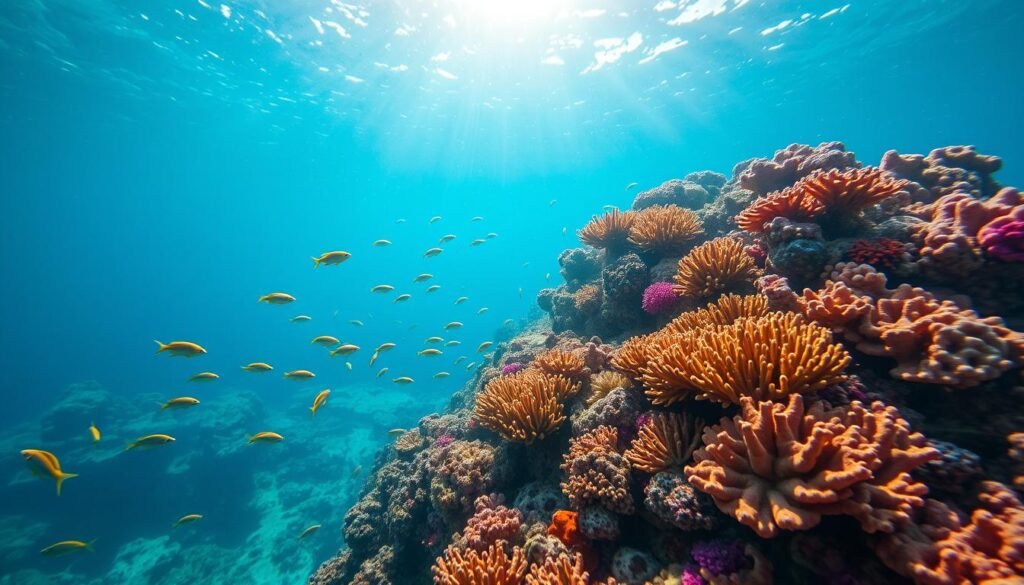
The protected coral reefs of Ras Mohamed National Park showcase Egypt’s commitment to marine conservation
I joined a small group led by Ahmed, a marine biologist turned eco-guide. Before our snorkeling expedition, he conducted a briefing on responsible reef etiquette: “Never touch the coral, maintain proper buoyancy, and take only photos, leave only bubbles.” The park strictly limits daily visitors and requires guides to accompany all groups—measures that have helped preserve this fragile ecosystem.
Beneath the surface, I discovered an underwater paradise. Vibrant coral formations housed countless fish species—from tiny clownfish to graceful rays. Ahmed pointed out areas where coral restoration projects were underway, with nursery-grown coral fragments being transplanted to damaged areas. “Ten years ago, this section was nearly dead from anchor damage,” he explained. “Now it’s thriving again thanks to conservation efforts funded partly by ecotourism.”
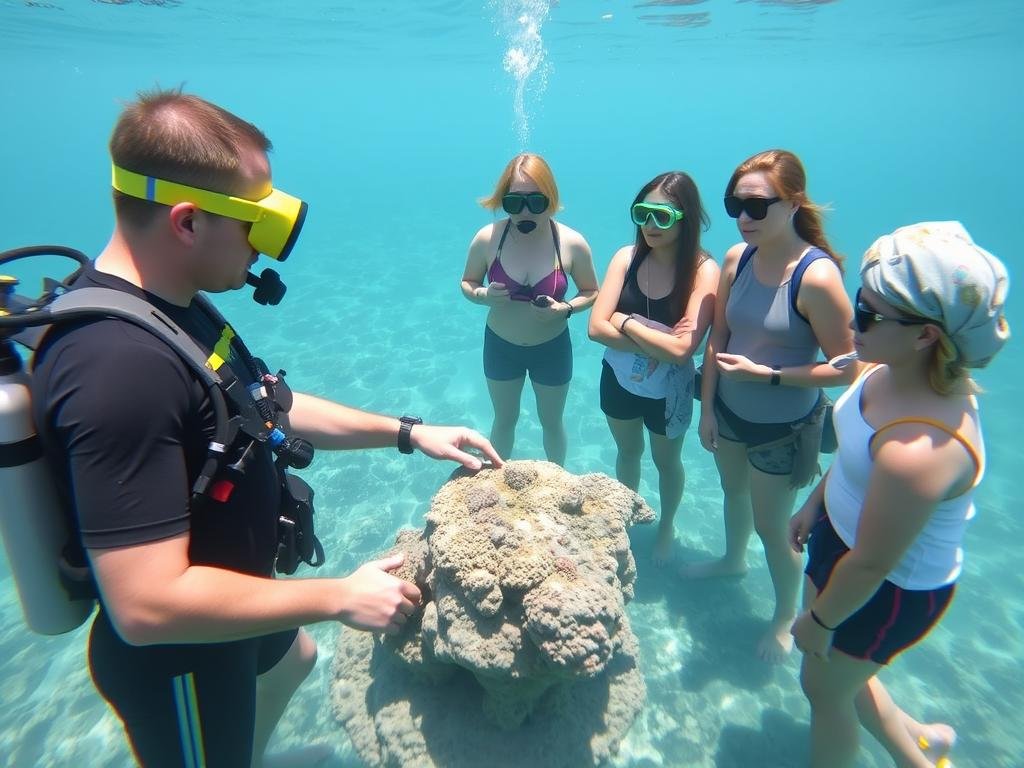
Educational programs at Ras Mohamed help visitors understand the importance of marine conservation
Back on shore, we visited the park’s research center where scientists monitor reef health and conduct studies on climate change impacts. A portion of all park entrance fees directly supports these conservation initiatives—a perfect example of how responsible tourism can fund environmental protection.
That evening, I stayed at an eco-lodge near the park that was built using local materials and designed to minimize energy consumption. Solar panels provided electricity, and the restaurant served sustainably caught seafood. As I watched the sunset over the Red Sea from my balcony, I reflected on how marine conservation and tourism can work hand in hand when managed thoughtfully.
Desert Nights: The Eco-Lodge Experience
My journey continued into the Eastern Desert, where I discovered one of Egypt’s most innovative eco-lodges. Nestled against dramatic mountains, this off-grid haven was built entirely from local stone and designed to blend seamlessly with the landscape.
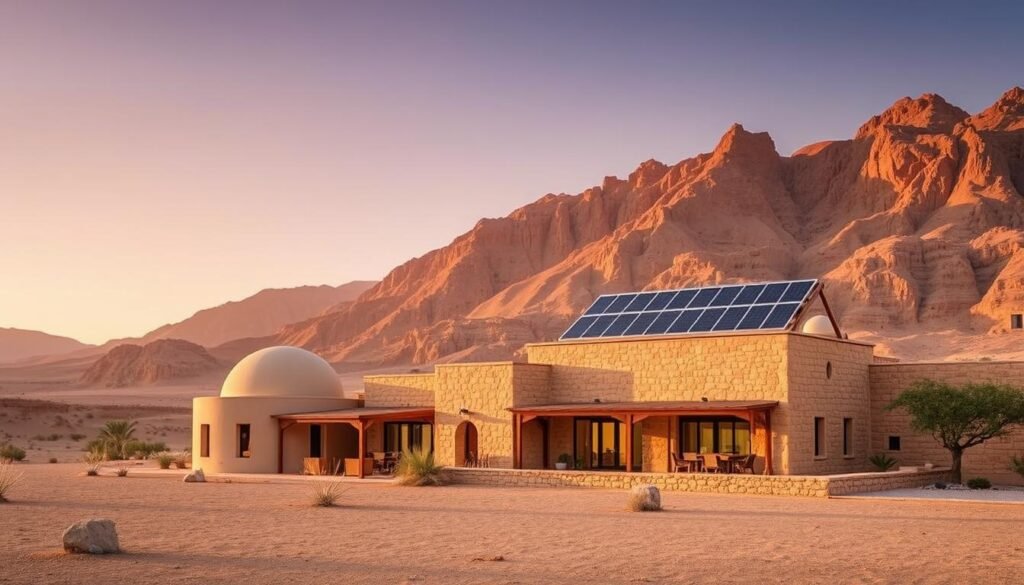
This desert eco-lodge demonstrates how sustainable architecture can harmonize with Egypt’s natural landscapes
Upon arrival, the manager gave me a tour highlighting the lodge’s sustainability features. “We harvest rainwater during the brief desert storms and store it in underground cisterns,” he explained. “Our electricity comes entirely from solar panels, and we compost all organic waste for our garden.” Even the furniture was crafted by local artisans using reclaimed wood and traditional techniques.
My room was simple yet comfortable, with thick walls that kept it cool during the day and warm at night. The absence of artificial light pollution offered something increasingly rare in our modern world—a truly dark sky. That evening, I joined other guests for stargazing led by a Bedouin guide who shared both scientific knowledge and traditional desert wisdom about the constellations.
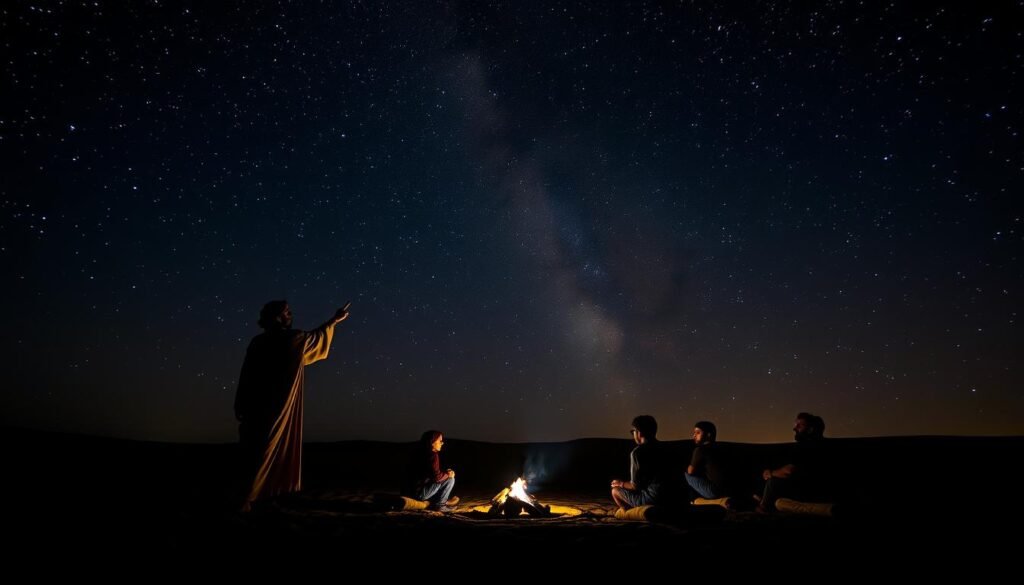
Stargazing with Bedouin guides combines cultural exchange with appreciation for Egypt’s pristine night skies
Meals at the lodge featured organic vegetables grown in their desert garden—an impressive feat in such an arid environment. “We use traditional Bedouin farming techniques combined with modern water conservation,” the chef told me as he served a delicious tagine. “Our goal is to be completely self-sufficient and show others that sustainable living is possible even in harsh environments.”
During my stay, I participated in a desert conservation project, helping to plant native acacia trees that prevent erosion and provide habitat for wildlife. The lodge manager explained that guests’ participation in such activities has helped restore several acres of degraded desert landscape over the years.
The most meaningful travel experiences often come from places that prioritize sustainability over luxury, connection over convenience, and environmental stewardship over exploitation.
Cultural Heritage: Sustainable Tourism in Nubian Villages
The final leg of my eco-journey took me south to Aswan, where I explored Nubian villages that have embraced ecotourism as a way to preserve their cultural heritage while creating sustainable livelihoods. These colorful communities along the Nile have faced challenges since the construction of the Aswan High Dam displaced many Nubian families in the 1960s.
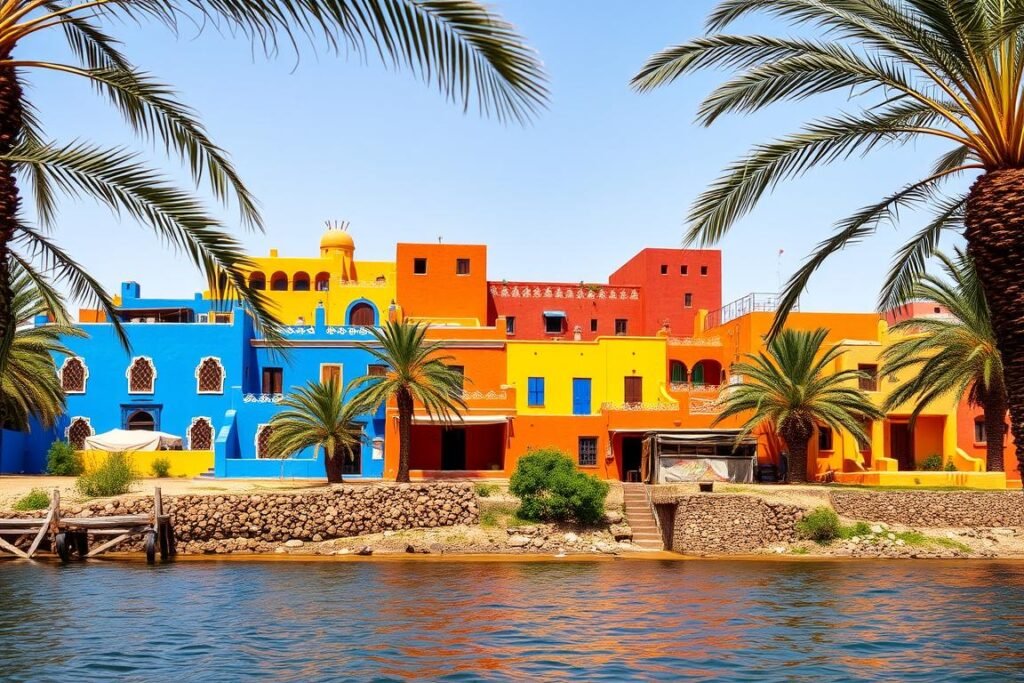
Nubian villages near Aswan showcase how cultural preservation and sustainable tourism can work together
I stayed with a Nubian family in their guesthouse, which was painted in the traditional vibrant colors that make these villages so distinctive. My host, Mahmoud, explained that community-based tourism has helped revitalize Nubian culture. “When tourists began showing interest in our way of life, young people started taking pride in our traditions again,” he said. “Now they learn our language, music, and crafts to share with visitors.”
The family’s home used traditional Nubian architectural techniques that naturally regulate temperature—high ceilings, thick walls, and strategic window placement eliminated the need for air conditioning despite the intense heat. Solar water heaters provided hot water, and meals featured locally grown produce and traditional Nubian recipes.

Traditional Nubian cuisine uses local ingredients and ancient recipes, preserving culinary heritage
During my stay, I participated in a community-led initiative to clean up the Nile shoreline. Local children joined tourists in collecting plastic waste while learning about environmental protection. “We teach the next generation that our livelihood depends on keeping the Nile healthy,” explained the project coordinator. “Tourism helps us fund these educational programs.”
I also visited a women’s cooperative where traditional Nubian crafts are being revitalized. Women create intricate beadwork, baskets, and textiles using sustainable materials and natural dyes. “Before ecotourism, these crafts were disappearing,” one artisan told me. “Now we earn fair income while preserving our heritage.”
Reflection: The True Value of Ecotourism in Egypt
As my journey through Egypt came to an end, I reflected on how ecotourism is creating a positive cycle of conservation, cultural preservation, and sustainable development. Beyond the magnificent temples and pyramids lies an Egypt committed to protecting its natural treasures and living heritage.
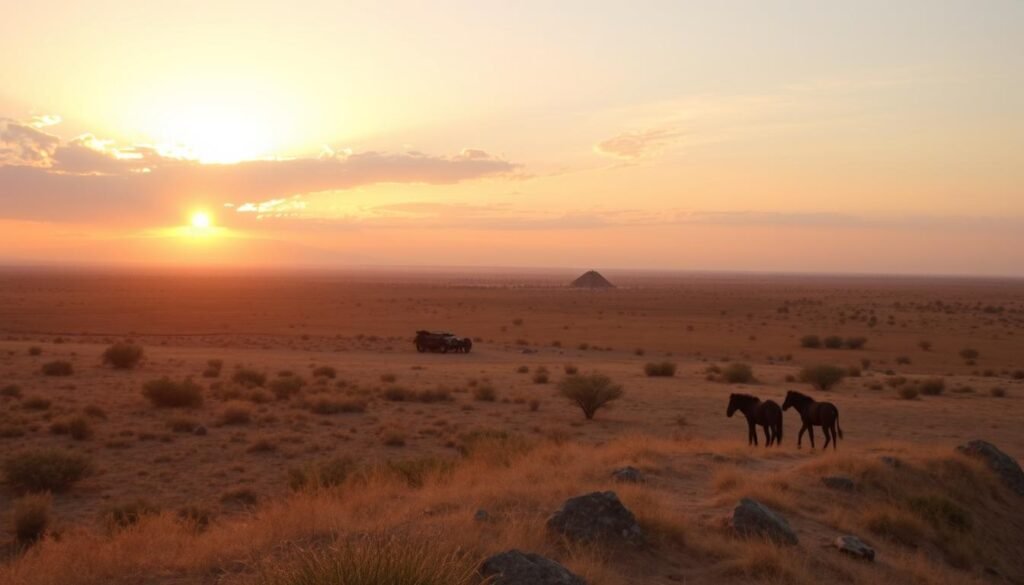
Sustainable tourism in Egypt offers hope for preserving natural and cultural treasures for future generations
The most valuable souvenirs I brought home weren’t trinkets or photographs, but a deeper understanding of how thoughtful tourism can benefit both travelers and destinations. By staying in eco-lodges, supporting community initiatives, and practicing responsible travel habits, I contributed to conservation efforts while experiencing a more authentic Egypt.
Ready to Plan Your Own Eco-Adventure?
Discover more sustainable travel destinations and tips to make your next journey both memorable and responsible.
My journey taught me that ecotourism isn’t just about minimizing harm—it’s about actively contributing to conservation and community wellbeing. It’s about choosing experiences that align with your values and connect you more deeply with the places you visit. As travelers, we have tremendous power to shape the future of tourism through our choices.
Egypt’s ecotourism initiatives demonstrate that it’s possible to balance environmental protection, cultural preservation, and economic development. By supporting these efforts, we can help ensure that Egypt’s natural and cultural treasures remain intact for generations to come—while enjoying more meaningful travel experiences ourselves.
As I boarded my flight home, I carried with me not just memories of Egypt’s spectacular landscapes and warm hospitality, but a renewed commitment to traveling more mindfully wherever I go. The ancient Egyptians built monuments meant to last for eternity; through ecotourism, we can help preserve both their legacy and the natural world that inspired it.

















[…] Discover more Egypt stories here. […]